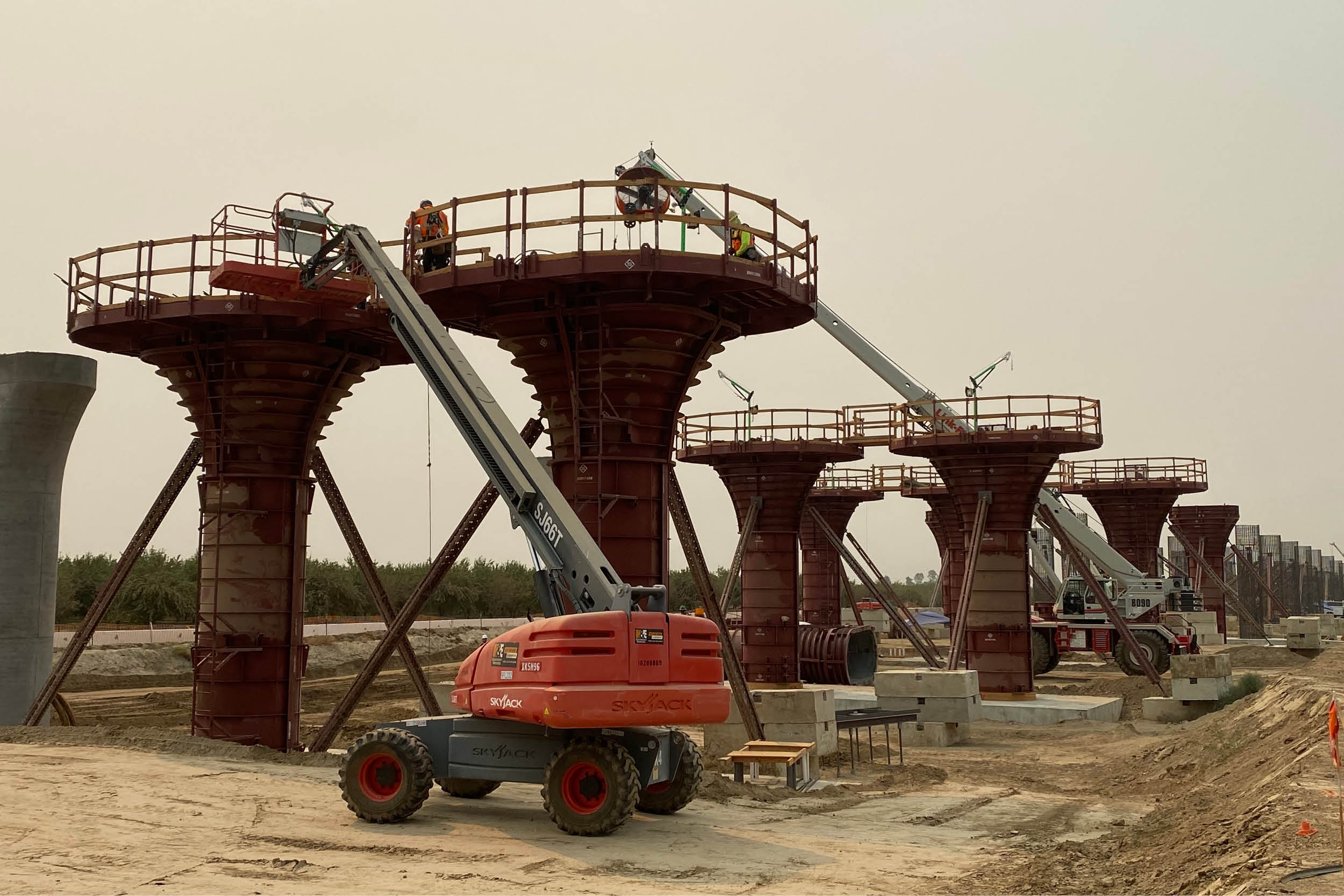Everybody wants to get back to 'normal' after the COVID pandemic passes, right?
But as Andy Kunz, President and CEO of the US High-speed Rail Association, pointed out during a Friday webinar on the future of transportation, 'normal' sucked. Did we forget, he asked, how a few months ago everyone was stewing almost daily in mind-numbing traffic and rotting in long airport lines? "Do we really want to return to the ‘normals’ of climate change, high cost, and low mobility?"
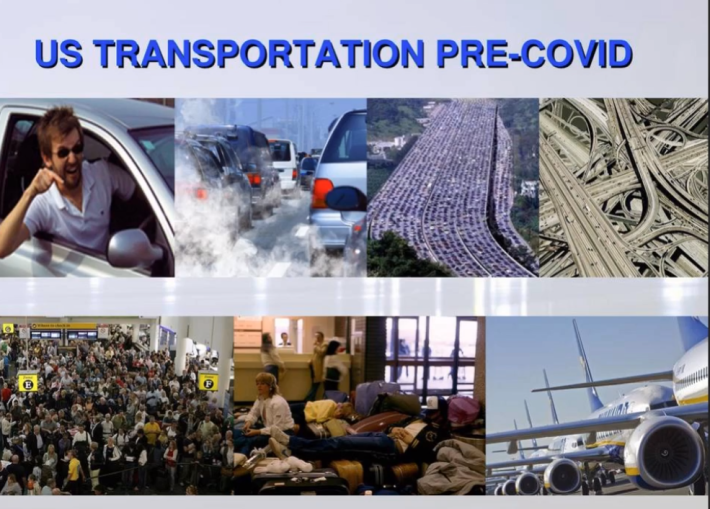
His organization wants a 1950's-style Federal Highway Act, just like the one that built the interstate highway system, only this time dedicated to building a nationwide network of clean, electric, high-speed rail tracks. "We envision a 17,000-mile network with state-of-the-art trains that travel faster than 200 mph."
And thanks to decades of political sparring against entrenched highway and petroleum interests, the keystone of that vision is finally underway. "118 miles are under construction in the Central Valley right now," said Brian Kelly, CEO of the California High-Speed Rail Authority.
"People don’t appreciate how much work is being done right now," he said, pointing out that over 1,000 workers are toiling away in the Central Valley and additional workers are installing the electrification on the Caltrain corridor that will be used for HSR trains to travel into downtown San Francisco. Less apparent but equally important: his staff is finishing the arcane but necessary environmental work for segments that will connect the Central Valley to the Bay Area and Bakersfield to Los Angeles and Anaheim (environmental documents for yet another block were approved this month).
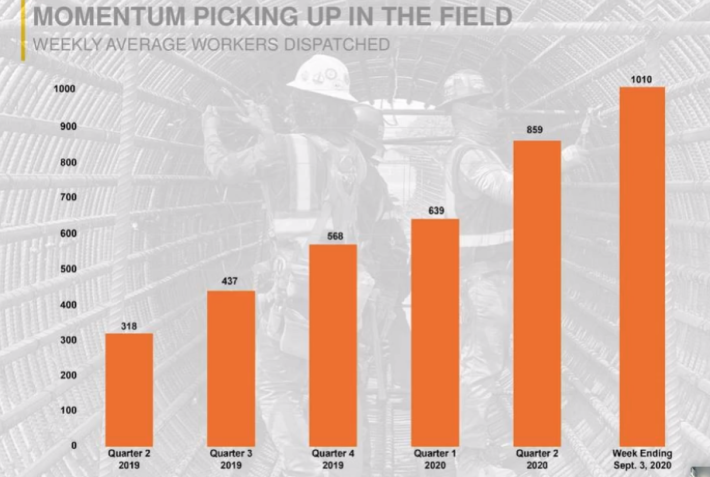
"As we complete environmental documents, we will expand pre-construction, utility relocation, acquiring properties," he said. In the next couple of years, preliminary engineering work of this kind will be happening along the entire 500-mile route, so that when future funds come from Washington, they will be ready to extend construction and finish the project in earnest.
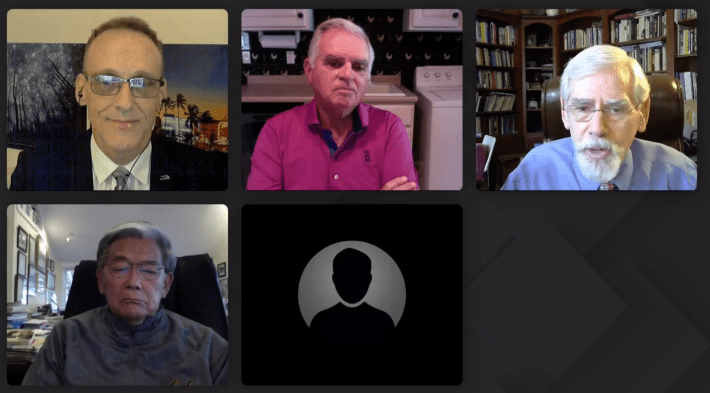
But getting more funding won't be easy. Former Secretary of Transportation Norman Mineta explained that it took decades of lobbying to get Washington to spend anything at all on rail. "You had the National Interstate and Defense Highways Act of 1956," he said. "Everything was still really built to the car."
It wasn't until 1991, with the Intermodal Surface Transportation Efficiency Act (ISTEA or "Ice-Tea"), that it even became possible to spend money on ground transportation that wasn't highways. That finally gave cities funds to start rebuilding transit systems that were not just neglected, but destroyed by highway and automobile lobbyists. "General Motors owned motor-coach lines and they built buses, so they bought the old Key rail system in the Bay Area," he explained. They then tore it out and pushed for more highways.
Once it became possible to direct some federal funds back to rail, local governments succeeded in getting new systems built. But intercity, high-speed rail continued to lag until the Obama administration came into power. As part of its 2008 stimulus package, Washington finally dedicated "$8 billion for HSR," explained former Secretary of Transportation Ray LaHood, who also participated in the webinar. "That’s $8 billion more than had ever been spent on HSR in America. That was Obama's vision. It was Biden’s vision, and it became the vision of the Department of Transportation."

At least, that was the idea. Instead, high-speed rail became a partisan football. "Two years later the Dems lost the congress and all of a sudden it was shut down by political interference," said former California High-Speed Rail Authority Chair Rod Diridon, who helped host the webinar.
"Because HSR was Obama’s idea, the Republicans wouldn’t fund it, so as the $8 billion was spent out, there was no more federal money," said LaHood, himself a former Republican congressman, but one who, obviously, was willing to work with Democratic administrations.
Because California voters approved a bond act to fund high-speed rail the same year Obama came to power in Washington, they were positioned to start a project by matching and then exceeding that initial grant from the federal government. "I give credit to Governor Brown," said LaHood. He and others on the panel pointed out that in California, Republican governors, including Arnold Schwarzenegger and Pete Wilson, also supported high-speed rail and were instrumental in getting it underway and keeping it moving forward.
The panelists, meanwhile, bemoaned the dark politics of Washington and other states, where bipartisan support for projects is no longer possible. "When people ask me why does Europe have such great trains? Why is China building so much high-speed rail? Why? Because of national leadership," said LaHood.
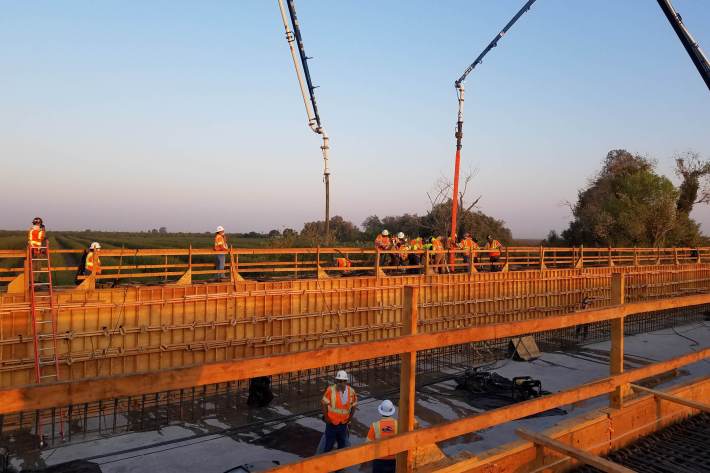
Diridon said that with record forest fires and so many other immediate indications of climate change, it's essential that politicians put their politics aside and invest in carbon-free forms of transportation before it's too late. Meanwhile, Kelly said they will forge ahead with California's high-speed rail megaproject, doing what they can to work with the ever-changing political winds and stop-and-start funding streams.
One thing's for certain: it's going to be a long haul before Kunz's vision of a 17,000-mile network is realized. But California is not alone. Florida, Texas, Nevada, the states of the Northeast and the Pacific Northwest also have projects in various stages of operation or development. But with only one true, 220-mph project now under construction in the U.S., "The great shining light is certainly California," said LaHood.
